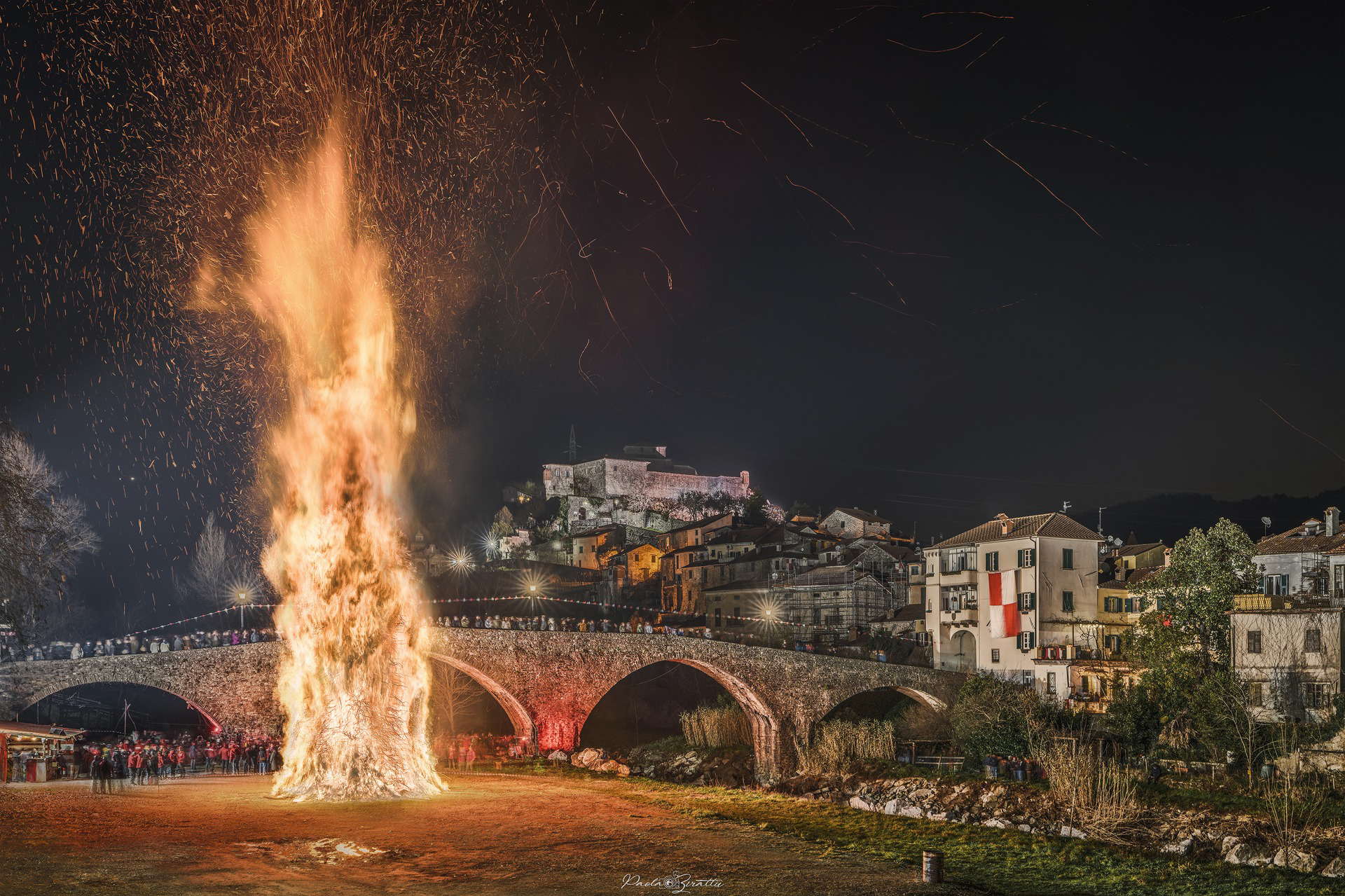
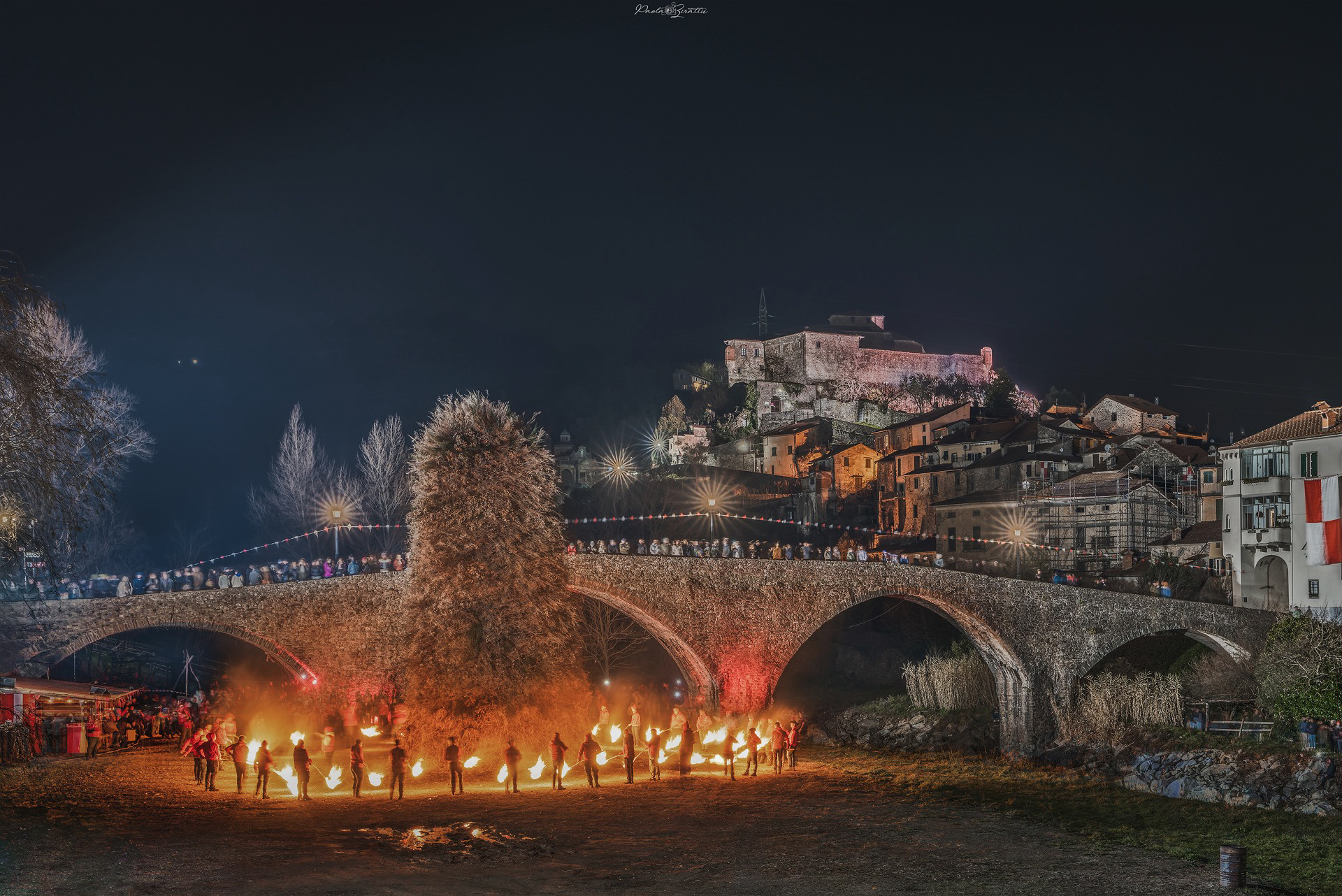

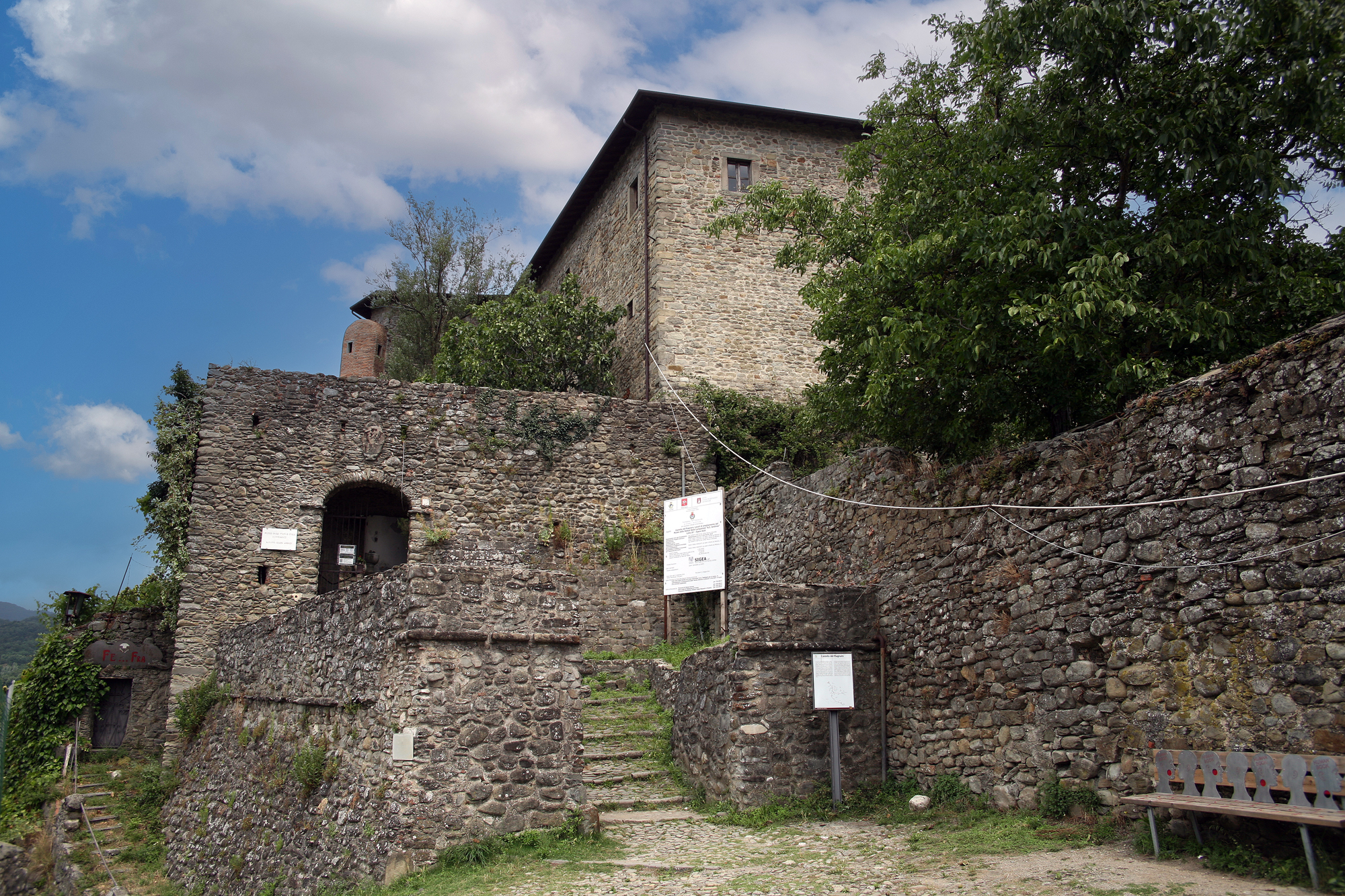
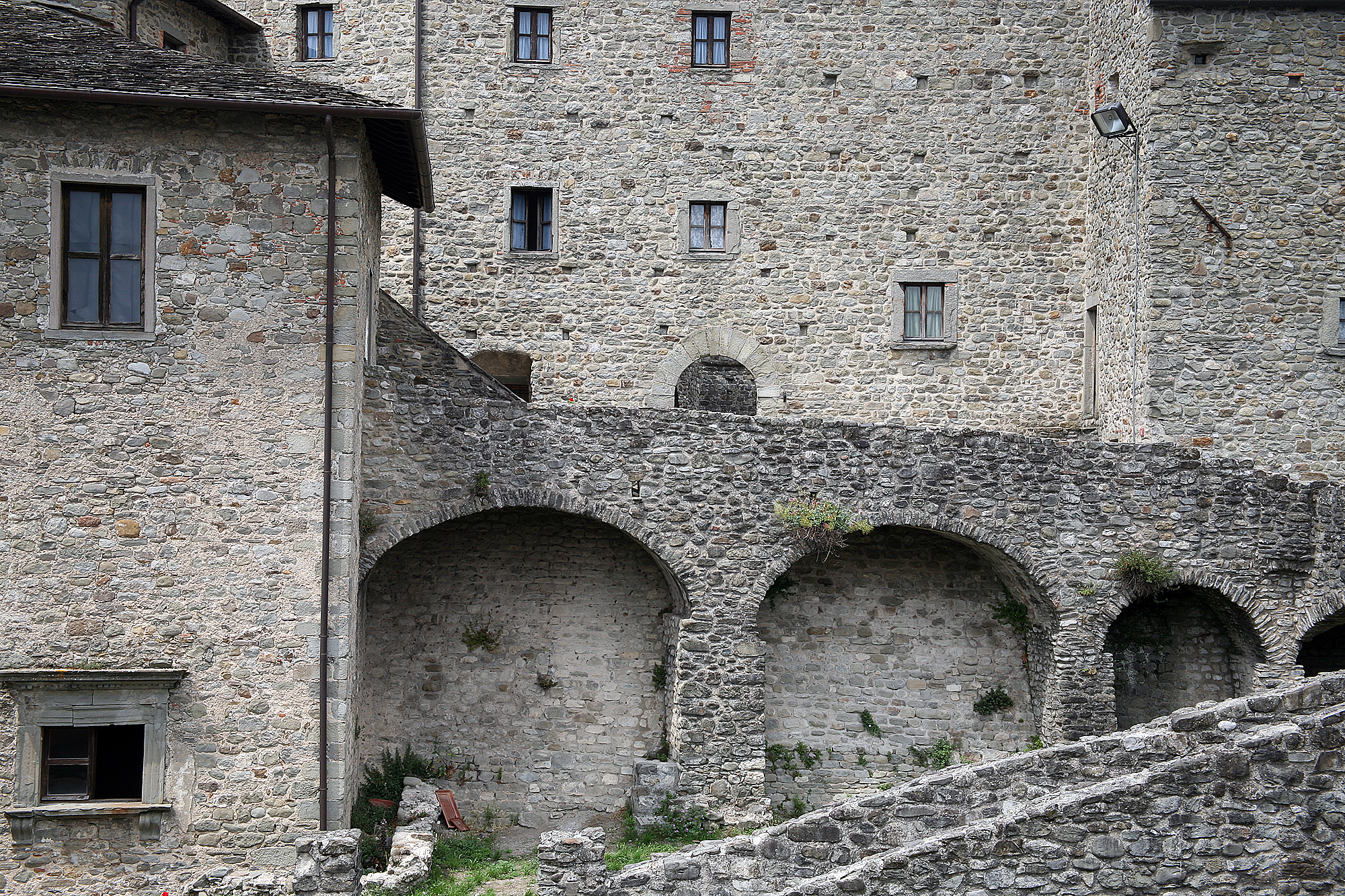
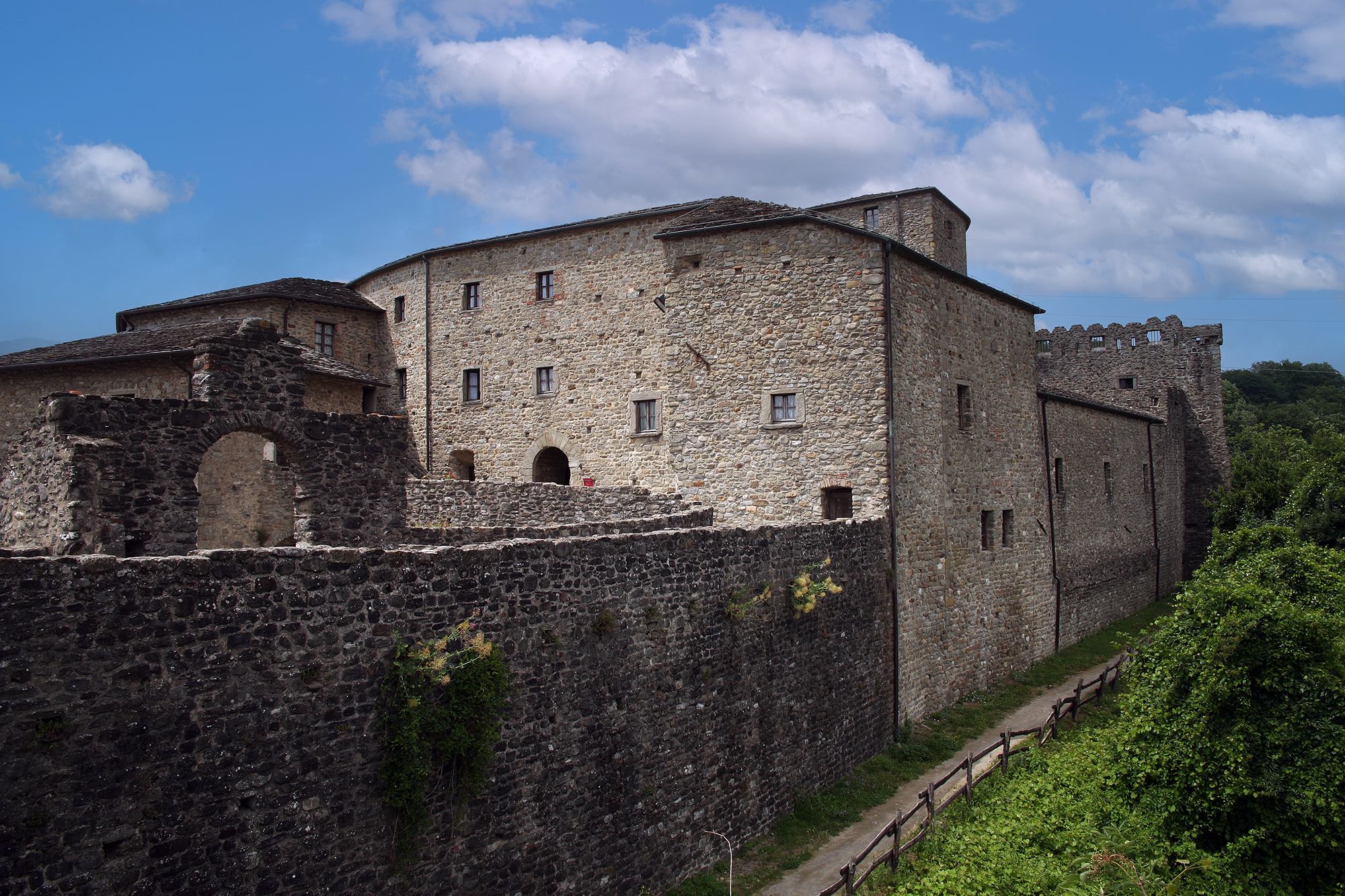
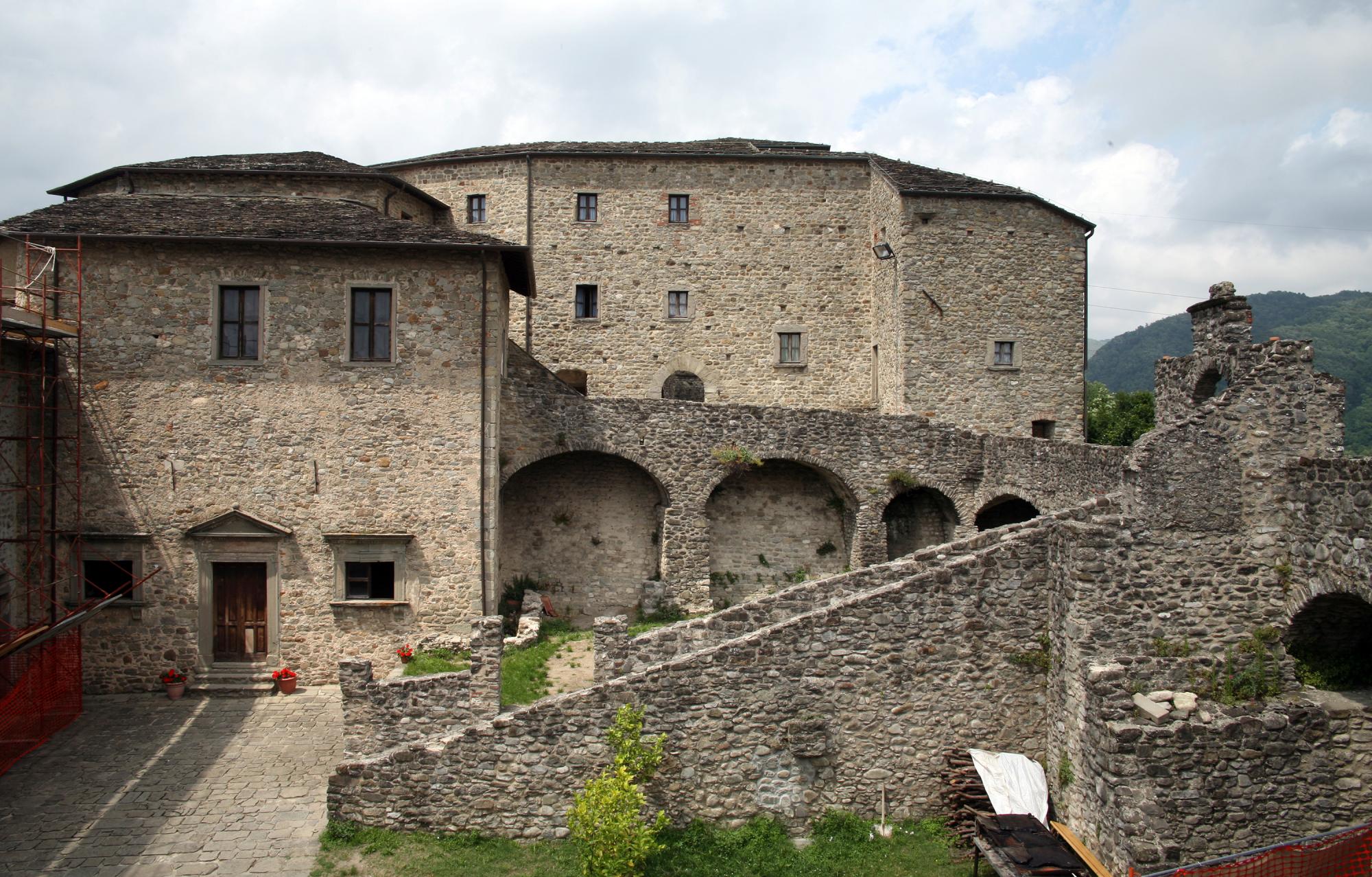
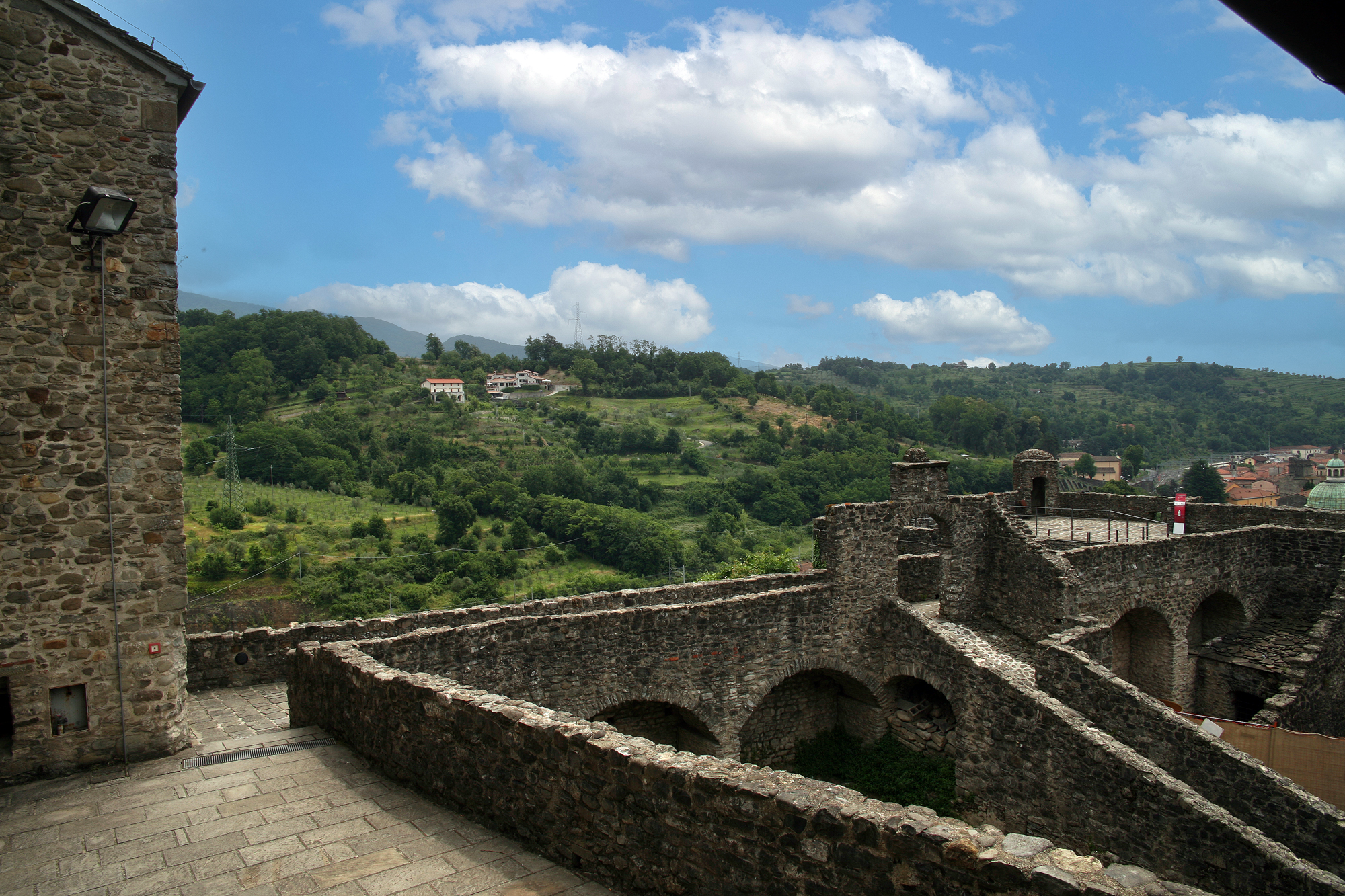
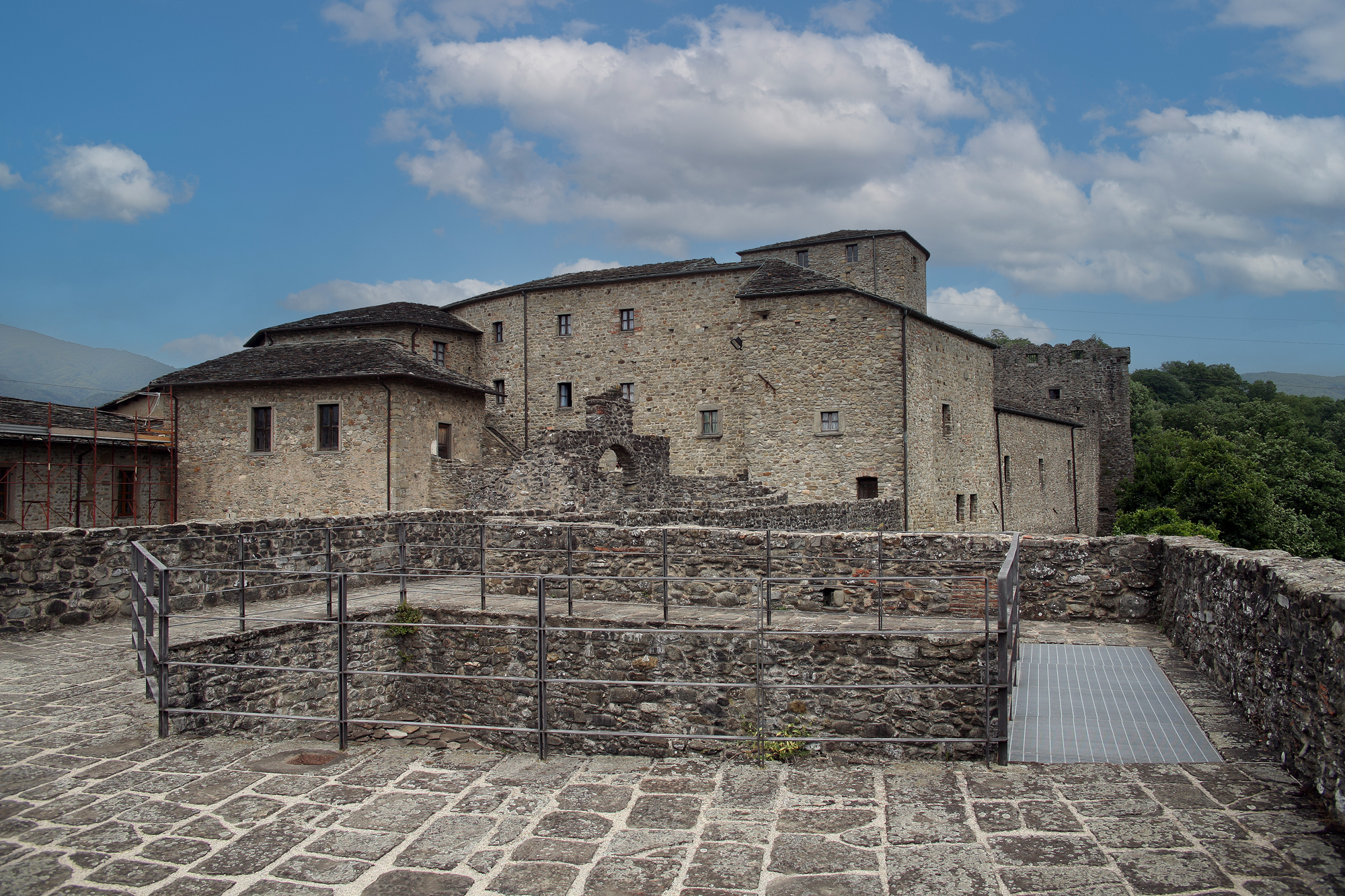
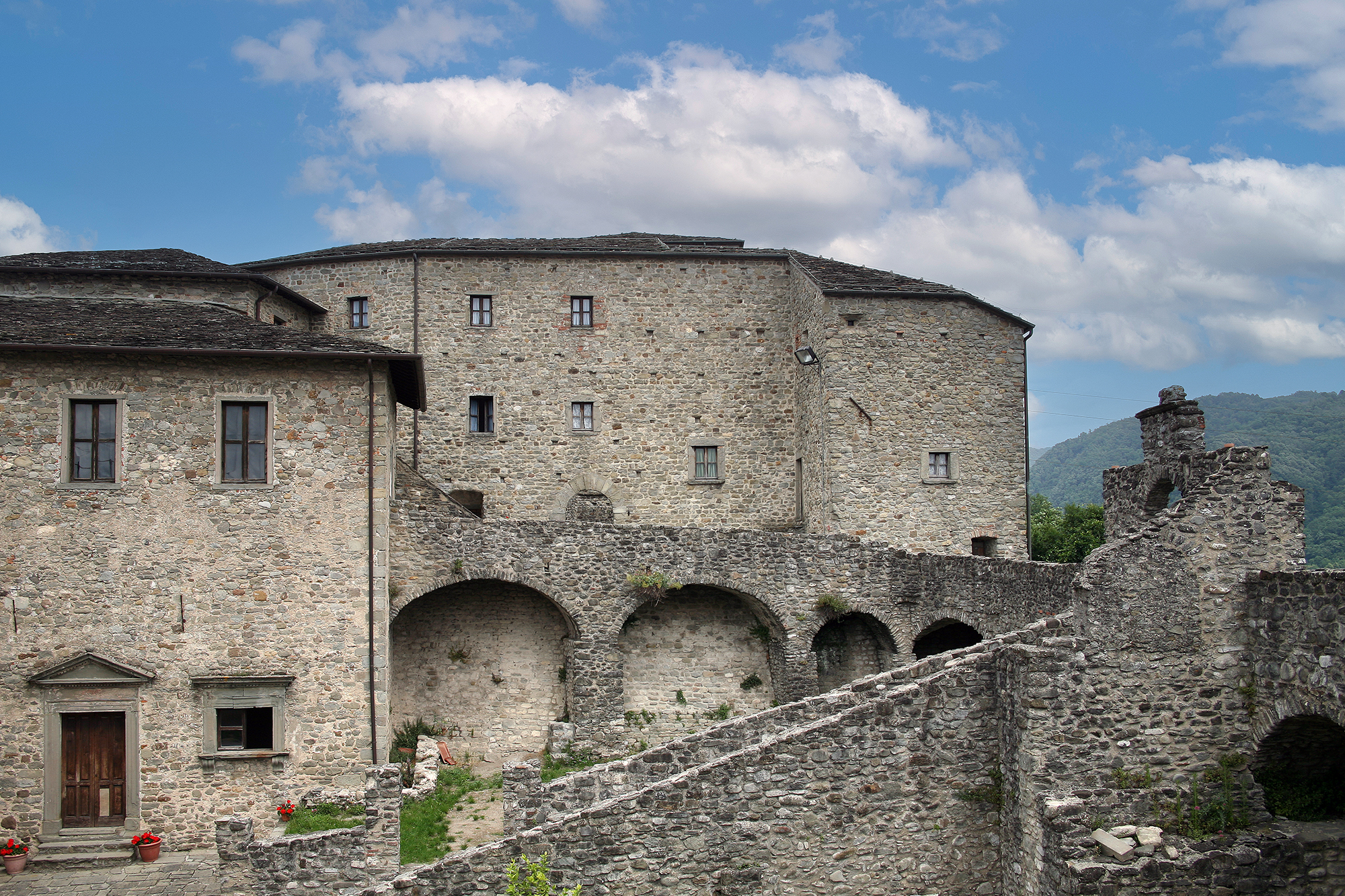

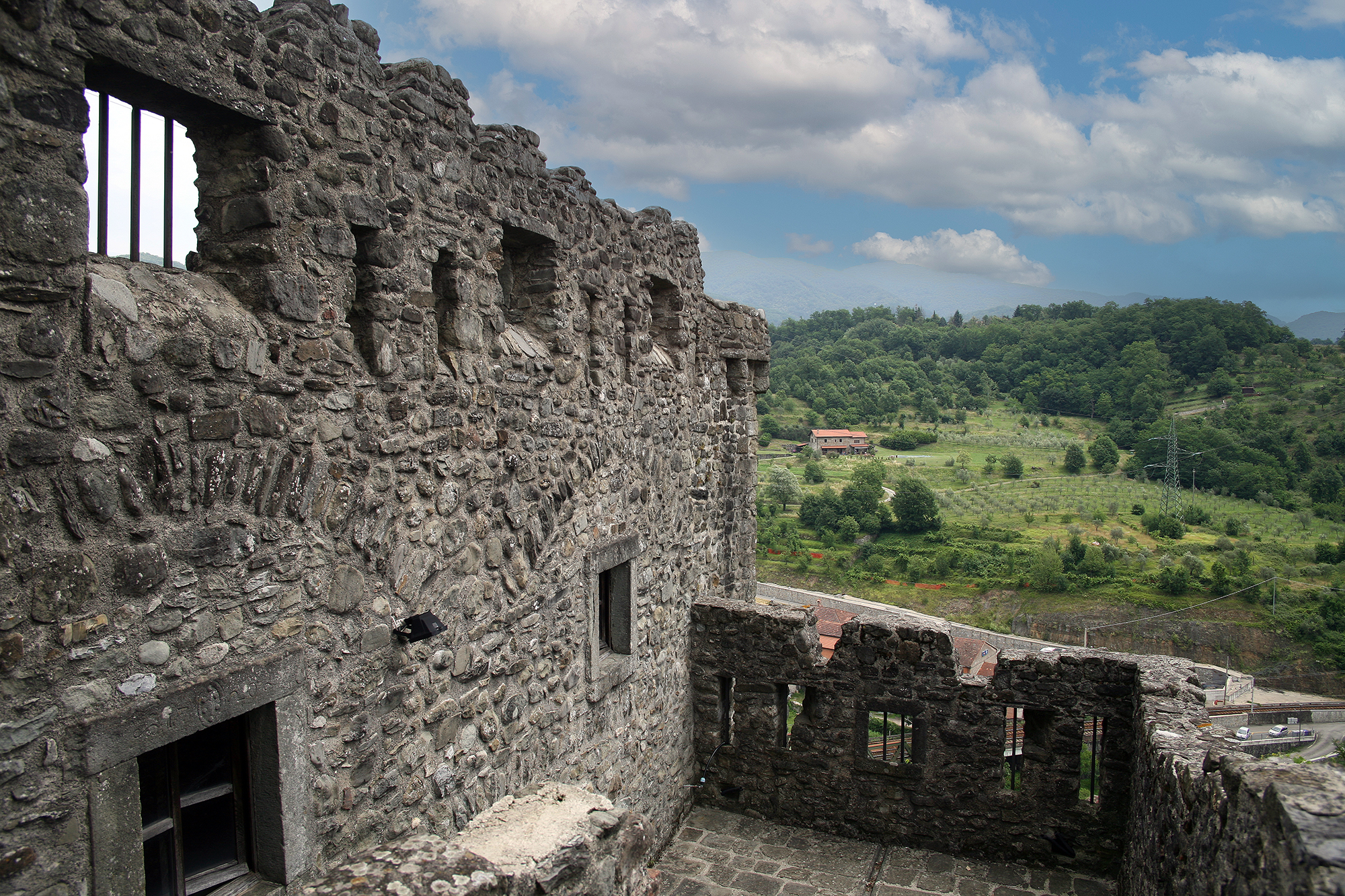
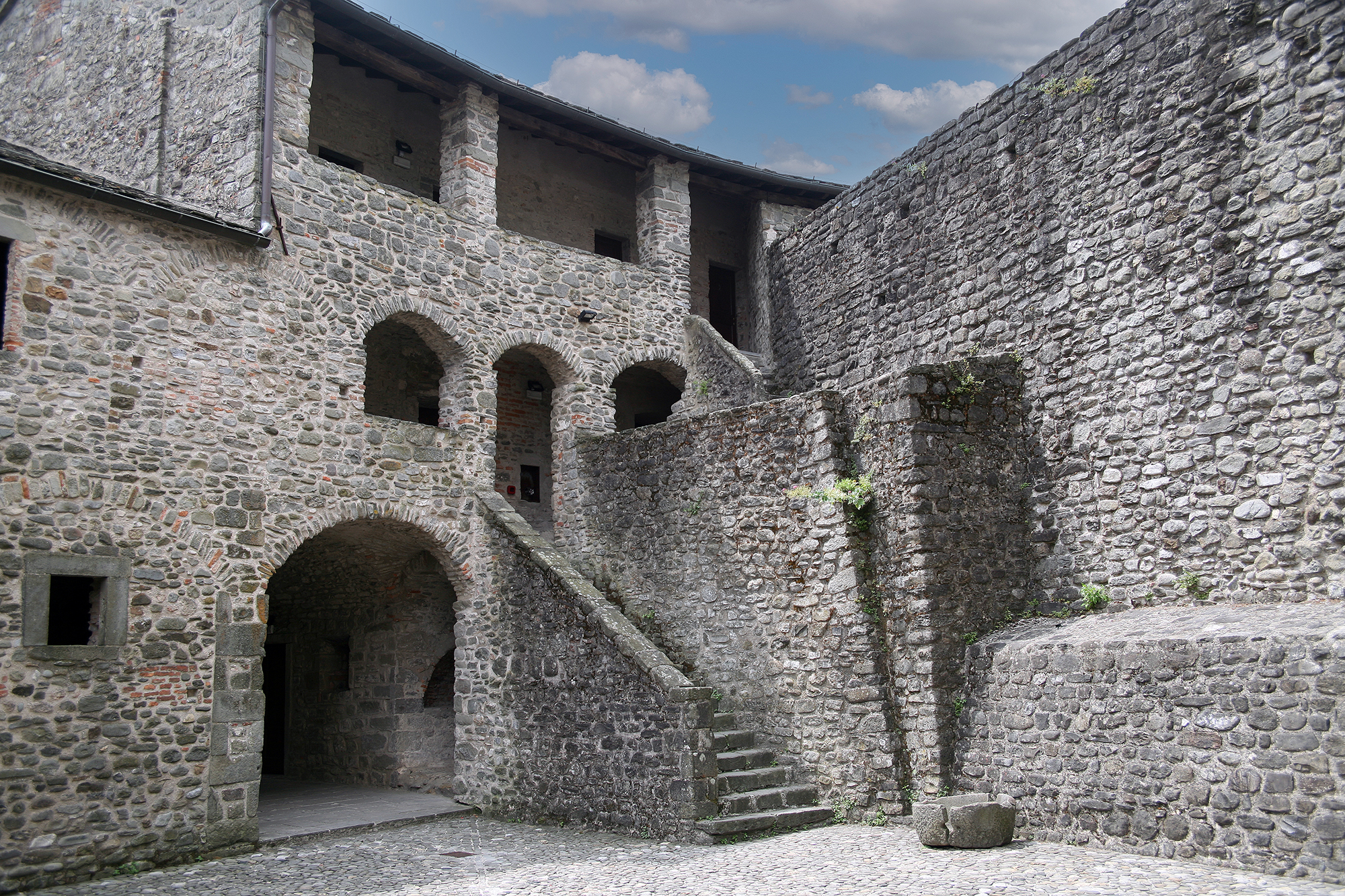













How to reach
Pontremoli, in northern Lunigiana, is easily reachable along the A-15 Parma-La Spezia (off the exit of the same name) or from the SS62 "della Cisa." The castle dominates the historic city center from the top of Piagnaro hill.
History
Pontremoli has been labeled "Porta dell'Appennino" (the Apennines Gate) for centuries, thanks to its highly strategic position at the junction of the Magra and Verde rivers. It overlooks Francigena Road and the large crowds of pilgrims, merchants, and armies that it carried between the north and south of the peninsula.
The area developed along the narrow strip of land dividing the two rivers. A "pons tremulous" (wooden bridge) once crossed the Verde River, which is how the city got its name: Pontremoli. The birth of the settlement is obscure. Although the presence of Ligurian people in the area since early history seems certain, Pontremoli was referred to for the first time in 994 (as "Puntremel") by Sigerico, Archbishop of Canterbury, in the description of his travels in Italy. The original center of village and castle rose up a few years before, in the middle of the 10th century, around a tower erected on Molinatico mountain's meridional hill by the Longobarda deli Adalberti family in defense of Hungarian attack. The name Pignaro comes from a nearby slate slab quarry, which is the characteristic roof material of Lunigianian houses. ("Piagne" means "shingles").
The advantage of Pontremoli's strategic position was simultaneously the cause of war and destruction for the city and its castle. Due to the stratification of its walls from continual demolition and reconstruction, today it's difficult to clearly identify the fortification's diverse phases of construction (from the year 1000 to the end of the 1700s), accounting for the structure's complexity. To call out some of the principal damage: the first destruction took place in 1110 with the passing of Enrico V's army; the most dramatic in 1495 with the invasion of Carlo VII; and the last during WWII, during the retreat of the German army, with the allied bombing also responsible for the loss of many buildings in the historic center.
The ancient heart of Piagnaro is its highest point, which rose up around the fortified complex's principal, 20-meter-high, semioval stone tower. It is actually a four-sided figure linked to a semicircle with curved surfaces outside the city walls. The original entry was through a door in the internal facade, almost 10 meters from the ground, reachable by a wooden structure no longer in existence, and protected by a drawbridge of which traces have remained. Some elements suggest that the tower dates back to the 1430s.
Under the tower, a square courtyard was defined on the west by a perimeter wall from the late Middle Ages and on the south and east by a large building, the result of the unification of several diverse structures that were probably home to the castle's barracks. The west side makes use of the preexisting perimeter wall and a supporting cylindrical tower.
A second courtyard lies below, with access by means of a ramp leading from a large door. The court, which houses a beautiful sandstone well, is defined on its southern and eastern sides by a perimeter with a wallwalk. Its steep, sloping walls were built with a technique similar to that used to construct the tower. An addition on the eastern side includes a protruding defensive apparatus with an angled gatekeeper's room, which most likely dates back to the 18th century. There is a chapel on the northern side, while the western side is made up of an outstretched, two-floor building, home to the Museum of the Luingiana Stone Statues since 1975 and once the residence of the castle's authorities.
The principal entrance, under a coat of Medicean arms, is down even further. It was once equipped with a drawbridge, reached by crossing the narrow village streets. The castle was "in arms" until 1790, the year that the Grand Duke of Tuscany, Pietro Leopoldo, gave the community the last cannon from its battlements. The bronze was used to construct a new bell for the city tower.
In addition to the castle, Ponteremoli has an interesting medieval city center.
The village was encircled in walls and well-defended by three fortresses (in addition to Piagnaro, there once were the Cacciaguerra and Castelnuovo Fortresses, of which ruins remain that were incorporated into the urban architectural structures to be touched on later) and six towers: two, in the upper part of the city, flanked Porta Parma; Seratti tower defended the bridge over the Verde river; and three were lined up along the eastern side of the lower part of the perimeter walls (since there was no running river to defend them, they were protected by a moat). Of the six ancient doors that opened into the walls of the city, only 4 remain: the upper, called San Giorgo (now known as the Parma door); those defended by two 14th-century humpbacked bridges, the Cresa and the Casotto (or Busticca), towards the Verde river; and the last, leading to the bridge over the Magra river.
One of the village's particularities was its division into two distinct centers, one in the mountains and one in the valley, occupied by the Guelfs and the Ghibellines, respectively. In 1322, Castruccio Castracani built the Cacciaguerra Fortress in the autonomous space in the middle in order to prevent the frequent conflicts between the inhabitants of the two zones. The fortress was endowed with three towers: the central one was converted into the municipal tower (called il Campanone); that on the east, on the Magra River, became the church bell tower; the other on the west, on the Verde river, was destroyed. Subsequently, Pontremoli expanded onto the left bank of the Magra River, where the Castelnuovo Fortress was erected, of which one tower and a door with pointed arch remain.
More info & notes

Museo delle Statue Stele Lunigianesi Castello del Piagnaro
Ph. +39 0187.831439 - info@statuestele.org - https://www.statuestele.org/
Opening Time:
01 Ottobre - 31 maggio orario continuato 09.30 - 17.30 - tutti i giorni
01 giugno - 30 Settembre orario continuato 10.00 - 18.30 - tutti i giorni
01 agosto - 31 agosto orario continuato 10.00 - 19.30 - tutti i giorni
---
Pyre Photos (Falò di San Gemignano) by Paola Zirattu - https://www.instagram.com/paola_zirattu/